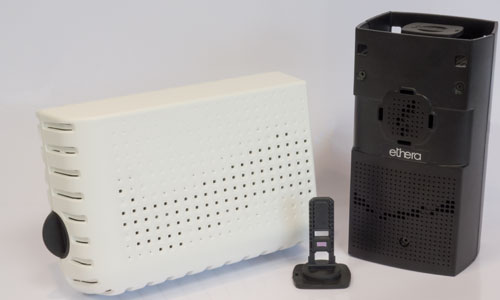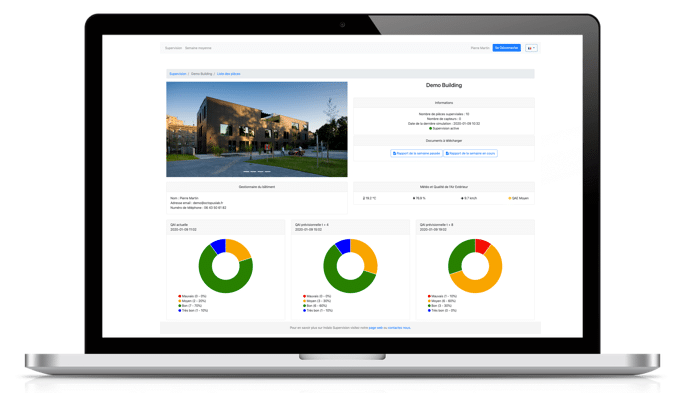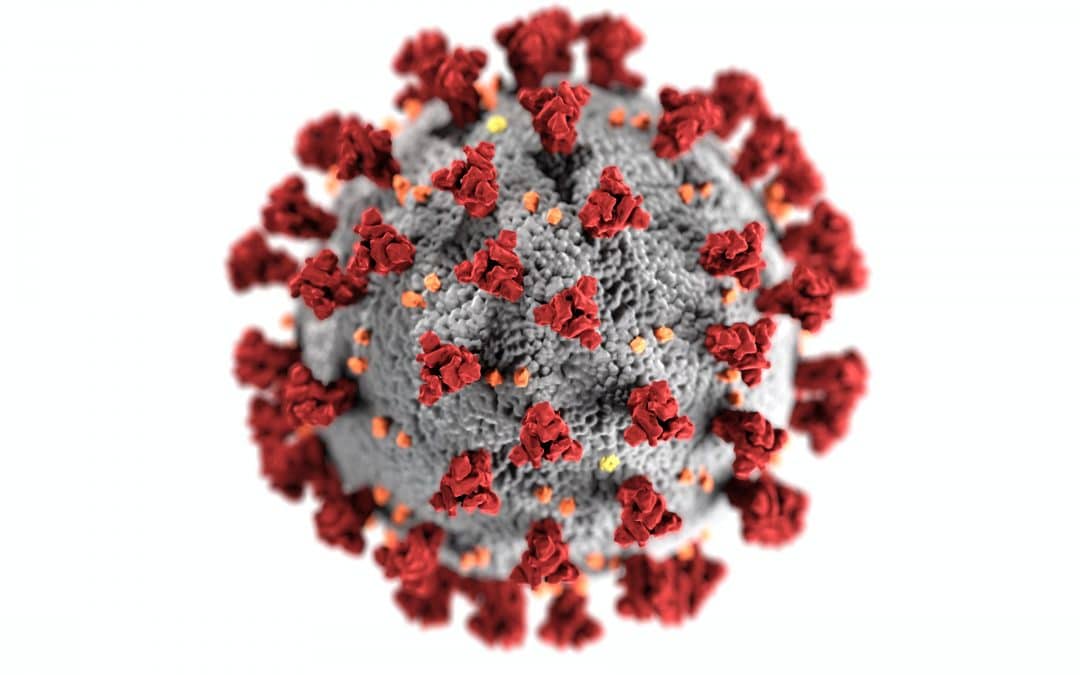WIN-B, a complete offer against the COVID-19
Simple and effective IAQ tools.
Evaluate the COVD-19-related risks to manage your building as accurately as possible.
CONTACT US FOR MORE INFORMATION OR QUOTATION
GET IN TOUCHThe virus can enter the body mainly via:
– Your nose
– Your mouth
– Your eyes
The virus can be spread mainly from person-to-person, when the contact is:
– Long enough
– Highly concentrated
Air pollution can easily irritate the respiratory system and increases the virus’ penetration into the body.
In addition to age, medical history, etc., some external factors can affect the host’s ability to fight infection when involving acquired immune deficits (1), such as:
- Taking certain medications
- Exposure to certain chemical and particulate pollutants (air quality)
How does the virus get to the main ways of spreading?
Directly: Via droplets produced by the patient, among others, when they:
– Speak
– Cough
– Sneeze
Indirectly: By hand-held contact, for example by touching the face (eyes / nose / mouth) with hands after:
– touching an infected person
– touching a contaminated surface
– Contacting aerosols suspended in the air on which the virus has landed.
1- Control ventilation and fresh air intake intelligently and in real time thanks to monitoring or measurement campaigns for buildings without automatic BMS (Building Management System).
2- Set up algorithm to evaluate the risk of contamination in the building
3- Set up air purifiers over comfort elements (humidity / temperature etc.) or AHUs to trap aerosols and irritant pollutants.
The IAQ Monitor NEMo Station enables the analysis of particulate matters – a silent helper of SARS-CoV-2 virus
Particulate matters and VOC
Reducing particulate matters in indoor air helps limit the risk of contamination, by reducing irritation and therefore the penetration of the virus in the body, but also by reducing its possibilities of its diffusion.

APPLICATIONS
TEST RESULTS REFLECTED ON INDEX WITH COLOURS
How to limit the risk of being contaminated by SARS-CoV-2?
It is necessary to:
- Block, as much as possible, the virus transmission ways.
- Respect barrier gestures, in particular social distancing.
- Depending on the situation, use a mask properly (wearing the mask improperly can lead to virus contamination.)
- Minimize the possibility of contaminating surfaces, by better organizing and regularly cleaning work space.
- Limit the presence of aerosols when possible, especially indoors.
- Avoid situations that can make people fragile, which helps transfer the virus.
- Learn about the risky situations you may encounter, including taking medication.
- Avoid the presence of chemical pollutants and irritating particulates in the air by putting in place the means to guarantee good Indoor Air Quality.


A complete offer against SARS-COV2 - WIN-B
Discover the Win-B by Ethera system offer: intelligent control of your building’s air quality
The WIN-B offer consists of 4 independent parts:
-
A study of the building to analyse the feasibility of air quality evaluation and risk management.
-
Setting up air quality analysis stations to carry out monitoring or measurement campaigns.
-
Implementing algorithms to interpret data and give ventilation control instructions
-
Filter media to reduce the pollution in the air entering the AHU or the comfort elements.
Ethera offers all of these elements in a complete system offering.
The air quality measurement stations analyze in real time the relevant parameters for the COVID risk assessment, the data goes back to our servers to be integrated into a dedicated algorithm. All data related to SARS-COV2 is integrated and updated regularly. The size of the contaminating particles, their travel distance, the survival time of the virus on surfaces, the frequentation of the building room by room … are taken into account in the algorithm. The result piece by piece is then available on our cloud and our dashboard and accessible via an API.
The BMS can retrieve these data as well as piloting instructions for the ventilation of the building.
If necessary, air purification may be recommended with filter media to be placed on the comfort elements or the air handling unit. Qualified and controllable mobile purifiers are also recommended.



